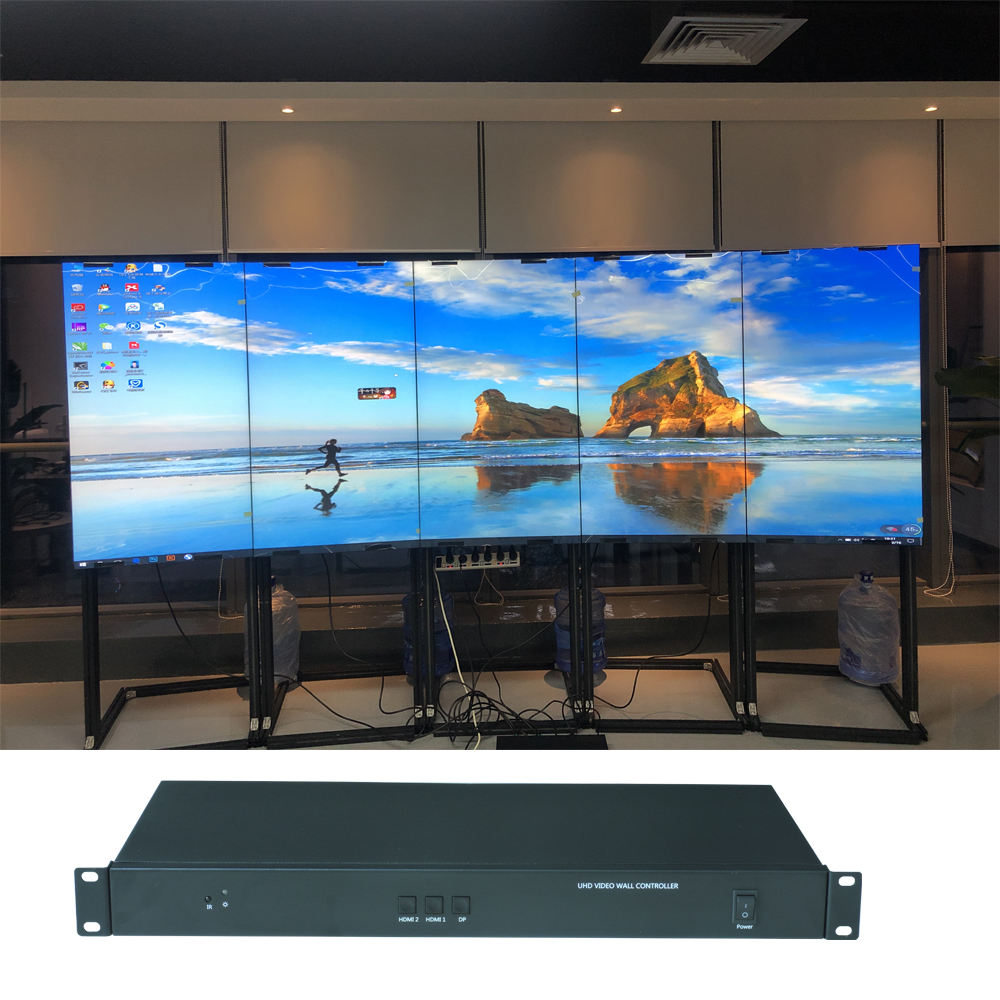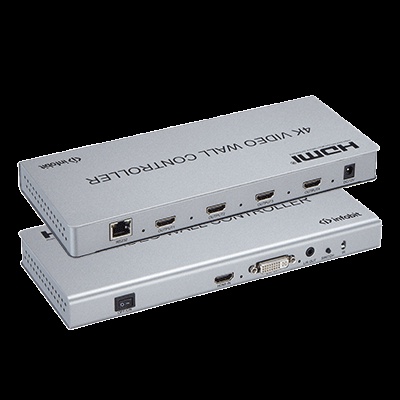
Video Wall Controller
Video Wall Controller In today's fast-paced world, captivating visual displays play a vital role in various industries, ranging from advertising and entertainment to control rooms and command centers. Among the technologies that have transformed the way we present information and engage audiences, video wall controllers stand out as powerful tools for creating stunning, immersive displays. In this article, we will explore the capabilities, benefits, and applications of video wall controllers, shedding light on how they have revolutionized the field of visual communication.
I. Understanding Video Wall Controllers:
A Video Wall Controller is a hardware or software solution that enables the display of multiple video sources on a large-scale video wall. It acts as the central command center, coordinating the content and ensuring seamless output across the entire display. The controller takes input from various sources such as computers, cameras, media players, and streaming devices, and arranges and scales the content to fit the video wall configuration.
II. The Power of Flexibility and Scalability:
One of the key advantages of video wall controllers is their ability to provide flexibility and scalability. Users can easily manipulate and customize the content layout on the video wall, allowing for dynamic presentations that suit specific requirements. Whether it's displaying a single image across the entire video wall or dividing it into multiple segments to showcase different content simultaneously, video wall controllers offer unparalleled control over the visual experience.
Moreover, video wall controllers can support a wide range of display configurations, including large-scale video walls with dozens of screens or smaller setups with just a few displays. This scalability allows users to adapt their visual displays to the available space and create impactful presentations regardless of the environment.
III. Enhanced Collaboration and Information Sharing:
Video wall controllers excel in collaborative environments where teams need to share information and work together effectively. In control rooms, command centers, and collaborative workspaces, video walls powered by controllers become powerful tools for monitoring, analyzing data, and making informed decisions in real time. By displaying critical information from multiple sources simultaneously, video wall controllers foster collaboration, enabling teams to identify patterns, spot trends, and respond swiftly to changing situations.
IV. Commanding Attention and Captivating Audiences:
When it comes to public spaces, retail stores, trade shows, or exhibitions, video wall controllers are highly effective in capturing attention and engaging audiences. Their ability to create stunning visual displays that span across large areas makes them ideal for delivering impactful messages, advertising campaigns, or immersive brand experiences. With vibrant colors, high resolution, and seamless transitions, video walls controlled by video wall controllers have the power to leave a lasting impression on viewers, increasing brand visibility and customer engagement.
V. Applications Across Industries:
The versatility of video wall controllers allows them to find applications in various industries. In the broadcast and entertainment sector, video wall controllers are used for live event coverage, sports broadcasts, and immersive gaming experiences. In the transportation industry, they facilitate real-time monitoring of traffic, train schedules, and airport operations. In the healthcare sector, video walls with controllers enhance medical imaging, enabling doctors to analyze diagnostic images more effectively. The applications of video wall controllers extend to education, retail, security, and more, revolutionizing visual communication in every field.
Conclusion:
As technology continues to advance, video wall controllers have become indispensable tools for creating visually stunning displays that captivate audiences, enable collaboration, and enhance decision-making processes. With their flexibility, scalability, and seamless integration of multiple video sources, video wall controllers have transformed the way we communicate information in various industries. From entertainment to surveillance and everything in between, the power of video wall controllers is reshaping visual communication and setting new standards for immersive and engaging displays.
Video Wall Controller How Its Work?
Video wall controllers are devices that play a crucial role in managing and controlling the content displayed on a video wall. They act as the central hub, receiving input from various sources and distributing it across multiple displays to create a cohesive and visually appealing presentation. To understand how video wall controllers work, let's delve into the key components and processes involved:
Hardware Components:
- Input Sources: These can include computers, cameras, media players, streaming devices, or any other device that generates video output.
- Video Wall Controller: The main hardware component, responsible for receiving, processing, and distributing video signals to the video wall displays.
- Video Wall Displays: The actual screens that make up the video wall, which can range from LED panels to LCD monitors.
- Cabling: High-quality cables are used to connect the input sources to the video wall controller and then to the individual displays.
Content Processing:
- Input Signal Conversion: The video wall controller takes the input signals from various sources and converts them into a format compatible with the displays. This conversion may involve scaling, resizing, or reformatting the content to match the resolution and aspect ratio of the video wall.
- Content Management: The controller manages the layout and arrangement of the content to be displayed on the video wall. It can divide the screen into multiple segments, each showing different content, or create a single large canvas displaying a unified image or video across all the displays.

- Content Synchronization: The controller ensures that all the displays in the video wall are synchronized so that there are no visible gaps or delays in the content playback. This synchronization is crucial for maintaining a seamless and visually appealing presentation.
Display Control:
- Display Mapping: The video wall controller determines which portion of the overall content will be displayed on each individual screen. It maps the input sources to specific display segments, taking into account factors such as resolution, orientation, and aspect ratio.
- Video Wall Configuration: The controller allows users to configure various display settings, such as brightness, contrast, color calibration, and bezel compensation. These adjustments help optimize the overall visual quality and ensure a consistent appearance across the video wall.
- Monitoring and Control: Many video wall controllers offer monitoring and control features, allowing users to monitor the status of each display, check for potential issues, and make real-time adjustments as needed. This includes functionalities like remote control, power management, and diagnostics.
Control Interface:
- User Interface: Video wall controllers often come with a user-friendly interface, either in the form of dedicated hardware control panels or software-based interfaces. These interfaces allow users to configure and manage the video wall easily, control content playback, adjust settings, and switch between different layouts or content sources.
- Remote Control and Network Integration: Advanced video wall controllers can be controlled remotely via network connections, allowing users to manage the video wall from a centralized location. This remote control capability is especially beneficial for control rooms or large-scale installations where accessibility is essential.
Final Words:
By combining these components and processes, video wall controllers provide the necessary infrastructure to create visually stunning, dynamic, and versatile video walls. They ensure that the content is displayed seamlessly across multiple screens, enabling captivating presentations, effective collaboration, and immersive visual experiences in various industries.


No comments yet